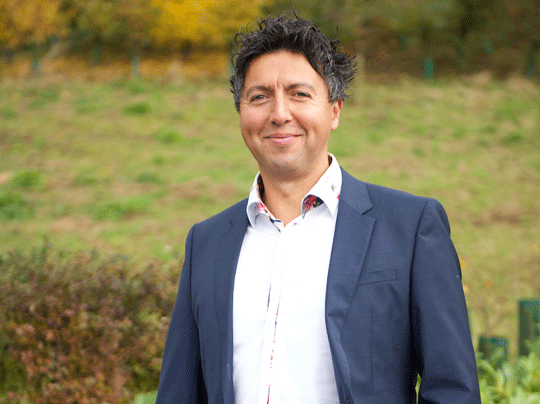So you want to be an ‘influencer’?
Case Study: Jonathan Dempsey
The word ‘influencer’ has taken on a whole new meaning in recent years with the emergence of social media platforms such as YouTube, Twitter and LinkedIn.

However, being a strong influencer of health and safety is not the same as Kim Kardashian promoting a new clothing brand through her Instagram account. Influencer and leader in operational risk and sustainability, Jonathan Dempsey, believes being able to influence is a fundamental part of being an effective health and safety professional.
"I think there’s been a realisation in recent years that too much talk of rules and regulations can make people switch off. If we adopt this approach and choose to tackle problems in isolation, there’s a danger we become overly transactional. As safety practitioners we need to use our softer skills to uncover what lies behind a problem which can often be a symptom of something else”.
It’s only by engaging with people at every level that we can truly understand the challenges that others face. Developing working relationships at both board and operational level allows us to influence others and create a real culture of care.”
Jonathan’s view that softer skills are of vital importance is backed by research carried out by NEBOSH in 2018. It highlighted that recruiters rank communication, coaching and influencing as the most valuable skills among prospective health and safety managers, aside of course from technical core competencies.
“For me the best thing about working in health, safety and risk management is that it’s a role where you can have a strategic influence across the entire business. You’re plugged in to the very heart of it, or at least you should be, having a cross-functional impact commercially, around human resource and so on. This is the level of influence you can exert.” Jonathan explained.
Of course, Jonathan has an extensive career behind him, not just in health and safety but within environmental health, enforcement, project, risk and quality management. He has an MBA, is a member of the Chartered Management Institute and is a Fellow of the International Institute of Risk and Safety Management. He certainly has the credentials and experience to be an effective influencer. But what advice would he give others, particularly those embarking on a career in health and safety, who want to have a greater influence themselves?
"I think the first, and most simple aspect, is to simply get out there and talk to people. Forget whatever it is that you want for a moment and just have good conversations, listen and start to understand the kind of problems people face in their roles and their lives. Build some trust and openness, then reflect so you can start addressing safety issues from their perspective”.
“Other than that, I think it’s a matter of learning and growing and finding the right starting point for that. For me, and it was quite a few years ago now, this was undoubtedly the NEBOSH National Diploma in Occupational Health and Safety. Yes, it gave me knowledge, but the Diploma is also big in terms of credibility. I wanted something that endorsed the fact that I knew my stuff and the Diploma certainly did that for me.”
Jonathan went on to highlight the new NEBOSH HSE Certificate in Health and Safety Leadership Excellence, which focuses on influencing skills and building relationships. “It’s great to see things moving in this direction. Influencing is a massively important part of leadership. So if we want to be leaders, first we must learn to be influencers.”
